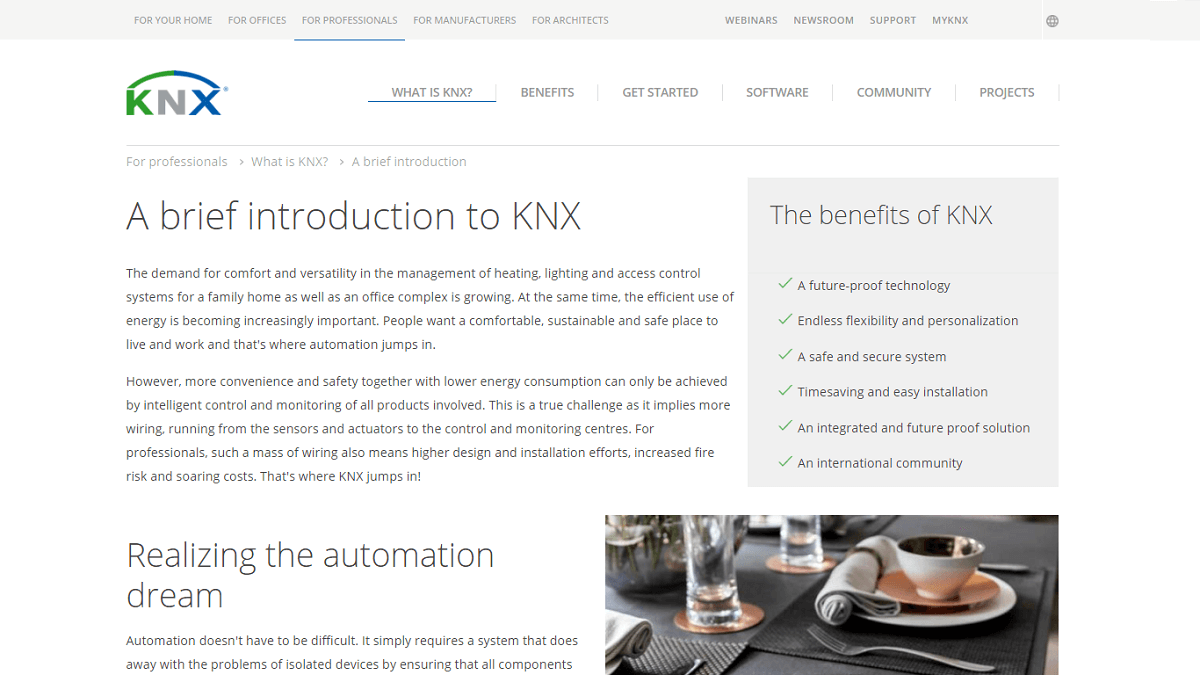KNX Smart Home: As technology continues to advance, the demand for smarter and more efficient homes and buildings has increased. KNX, a worldwide standard for home and building automation, has emerged as a solution to meet this demand. In this article, we’ll take a closer look at KNX smart home and building solutions and why they are a game-changer in the industry.
In this article, we will cover:
- What is KNX?
- How does KNX work?
- Benefits of using KNX
- Flexibility
- Interoperability
- Energy Efficiency
- Scalability
- KNX Smart Home Solutions
- Lighting Control
- HVAC Control
- Audio/Visual Control
- Security and Surveillance
- Energy Management
- KNX Building Solutions
- Lighting Control
- HVAC Control
- Audio/Visual Control
- Security and Surveillance
- Energy Management
- KNX vs. Other Home Automation Systems
- Conclusion
- FAQs
1. What is KNX?
KNX is a global standard for home and building automation that enables devices from different manufacturers to communicate and work together seamlessly. The KNX Association, which was founded in 1990, has over 500 manufacturers worldwide and more than 90,000 certified KNX partners.
2. How does KNX work?
KNX works by using a standardized communication protocol over a bus system, allowing devices from different manufacturers to communicate with each other. The KNX bus system consists of a twisted pair cable that connects all KNX devices in the building.
KNX devices are programmed using a software tool called ETS (Engineering Tool Software). ETS enables installers to program and commission KNX devices to work together in a customized way.
3. Benefits of using KNX
3.1 Flexibility
KNX offers great flexibility as it is an open standard. This means that any KNX device can be integrated into the system regardless of the manufacturer. Also, it allows for a customized installation that can meet the specific requirements of the user.
3.2 Interoperability
KNX devices communicate with each other using a standardized communication protocol. This means that devices from different manufacturers can communicate with each other without the need for additional software or hardware.
3.3 Energy Efficiency
KNX devices are designed to be energy-efficient. They can automatically adjust lighting, heating, and cooling according to occupancy and environmental conditions, reducing energy waste and costs.
3.4 Scalability
KNX is scalable, which means that it can be expanded as required. KNX devices can be added to the system as the building evolves without the need to replace the existing infrastructure.
4. KNX Smart Home Solutions
4.1 Lighting Control
With KNX, lighting control can be fully automated, allowing for customized lighting scenarios. Lighting can be adjusted according to the time of day, occupancy, and daylight levels, saving energy and enhancing comfort.
4.2 HVAC Control
KNX can control heating, ventilation, and air conditioning (HVAC) systems. Temperature and humidity sensors can be integrated with the KNX system, allowing for automatic adjustments based on occupancy and environmental conditions.
4.3 Audio/Visual Control
KNX can control audio and video systems. Audio and video can be distributed to different rooms, and their volume and source can be controlled centrally.
4.4 Security and Surveillance
KNX can integrate with security and surveillance systems to provide a comprehensive security solution for smart homes. This includes motion sensors, door and window sensors, and cameras that can be controlled and monitored through the KNX system.
4.5 Energy Management
KNX can help manage energy consumption in smart homes. Energy consumption can be monitored, and devices can be programmed to turn off when not in use, reducing energy waste and costs.
5. KNX Building Solutions
Similar to KNX smart home solutions, KNX building solutions provide advanced automation for commercial and industrial buildings. Here are some of the features of KNX building solutions:
5.1 Lighting Control
KNX can control lighting in commercial and industrial buildings, allowing for a customized lighting scenario that can reduce energy waste and costs.
5.2 HVAC Control
KNX can control HVAC systems in commercial and industrial buildings. Temperature and humidity sensors can be integrated with the KNX system, allowing for automatic adjustments based on occupancy and environmental conditions.
5.3 Audio/Visual Control
KNX can control audio and video systems in commercial and industrial buildings. Audio and video can be distributed to different rooms, and their volume and source can be controlled centrally.
5.4 Security and Surveillance
KNX can integrate with security and surveillance systems in commercial and industrial buildings, providing a comprehensive security solution. This includes motion sensors, door and window sensors, and cameras that can be controlled and monitored through the KNX system.
5.5 Energy Management
KNX can help manage energy consumption in commercial and industrial buildings. Energy consumption can be monitored, and devices can be programmed to turn off when not in use, reducing energy waste and costs.
6. KNX vs. Other Home Automation Systems
KNX is not the only home automation system available in the market. However, it stands out for its flexibility and interoperability. Other home automation systems are usually proprietary and only work with devices from the same manufacturer. This limits the options available to homeowners and makes it difficult to expand the system in the future.
KNX, on the other hand, is an open standard that allows for devices from different manufacturers to communicate with each other. This provides homeowners with greater flexibility and more options when it comes to building a customized automation system.
7. Conclusion
KNX smart home and building solutions provide a comprehensive and customizable solution for home and building automation. With its open standard and interoperability, KNX offers flexibility and scalability that other home automation systems do not. Its energy efficiency, security features, and advanced automation make it a game-changer in the industry.
8. FAQs
- Can KNX devices be integrated with other home automation systems?KNX devices are designed to be integrated with other systems, making it a versatile solution for home and building automation.
- How easy is it to program and commission KNX devices?KNX devices are programmed using ETS (Engineering Tool Software), which is user-friendly and straightforward to use.
- Is KNX compatible with all types of buildings?KNX is compatible with all types of buildings, including residential, commercial, and industrial buildings.
- Can KNX help reduce energy costs in buildings?Yes, KNX can help manage energy consumption and reduce energy costs in buildings.
- How secure is KNX?KNX provides a comprehensive security solution for homes and buildings, including motion sensors, door and window sensors, and cameras that can be controlled and monitored through the KNX system.


